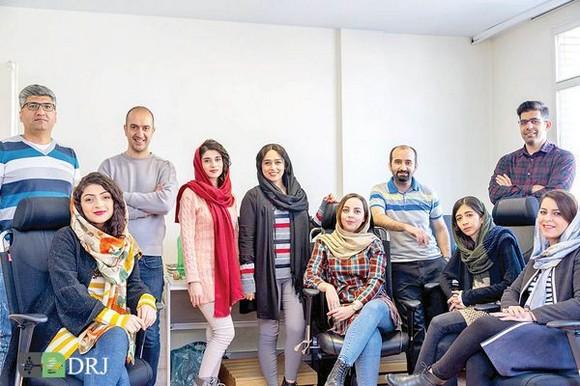Jâbir ibn Hayyân
Abû ‘AbdAllah/Abû Mûsa Jâbir ibn Hayyân al-Sûfî al-Azdî/Al-Tûsî , fl . 2nd/8th century?
Jâbir ibn Hayyân is at once the most enigmatic and one of the most important figures of the history of Islamic science . Reigning for centuries as the supreme alchemical authority both in mediaeval Islam and the Latin West , as a historical personage Jâbir is still shrouded in mystery , and no factual claims about him can be made with certainty . Indeed , both in the early Islamic tradition and in modern scholarship there circulates the opinion that Jâbir never existed at all , and that all writings attributed to him are apocryphal . On the other end , the dominant received tradition , as well as popular perception , presupposes Jâbir’s historicity , considering him that great Muslim alchemist of the 2nd/8th century who was a close disciple of the sixth Shî‘î Imâm Ja‘far al-Sâdiq ( d . 147/765 ) , and accepting the authenticity of all writings the Arabic tradition has attributed to him . This latter view is also espoused in a learned manner by the contemporary scholar Fuat Sezgin , as well as by the modern historian of alchemy and chemistry , E . J . Holmyard .
A very large body of Arabic writings , many of them highly tantalizing , pass under the name of Jâbir ibn Hayyân . This corpus Jâbirianum , of which no less than 500 titles were restituted by Paul Kraus ( see below ) , is generally described as “alchemical”—but this rubric is disparaging . The corpus is more than a collection of recipes to transmute base metals into gold—in fact , gold-making ( aurifiction or aurifaction , see Needham ) is really a very minor preoccupation of these writings . The scope here is vast: from cosmology to music , from medicine to magic , from biology to chemical technology , from geometry to grammar , from metaphysics to prosody , from logic to artificial generation of living beings , from trickery to numerology; and permeating throughout the corpus is a dark dust of religio-political writings of a radical Shî‘î kind , expressing a characteristic chiliasm , along with astrological predictions , and symbolic Imâmî myths .
It was this enormous scope of the Jâbirian corpus and its size that constituted largely , though not exclusively , the grounds for Paul Kraus to conclude that these texts were not the work of a single author , and that they were written no earlier than the 3rd/9th century , and took some one hundred years to complete . On the constructive side , Kraus identified these authors as a fraternity of Ismâ‘îlî sages , and declared that if a historical Jâbir existed at all , he may have written only one text , the Kitâb al-Rahma al-Kabir ( The Great Book of Mercy ) . This view , expressed by a scholar who still remains the greatest modern authority on Jâbir , has generally been accepted by the bulk of contemporary historians of science in the West . The Holmyard-Sezgin position , on the other hand , has been received with much reservation , and often ignored altogether .
In my book , Names , Natures , and Things , the first full-scale study of Jâbir in the English language , I had pointed out what I considered the problematic nature of Kraus’s position , casting doubt on the specifically Ismâ‘îlî character of the Jâbirian corpus , re-surveying the size of the corpus , re-examining the nature of the citation of and references to Greek works in it , re-opening the question of Jâbir-Ja‘far relationship , inter alia . I had refrained from making a positive identification of the authorship of these writings or making a definitive pronouncement on Jâbir’s historicity . But another scholar , Pierre Lory , has made a suggestion which I now tentatively espouse . Lory suggests that it may be safe to assume the historical existence of a 2nd/8th century Muslim alchemist named Jâbir ibn Hayyân , and also the existence of an authentic small core of writings—but that the corpus Jâbirianum as it was eventually constituted is an apocryphal growth around this genuine core . The notorious “Jâbir-Problem , ” an expression coined by Julius Ruska in the past century , now rests at this juncture .
Jâbir’s European career has its own complications . He was widely known in the medieval Latin West mostly as “Geber , ” and at least three of his treatises were translated into Latin . But Jâbir’s reputation was so commanding that a large number of originally Latin alchemical writings have been falsely attributed to him , apparently , and typically , to give them a ring of authority . Thus , for example , the famous Geberian summa perfectionis is an apocryphal Latin work; it is not a rendering of an Arabic work of Jâbir .
Jâbir is almost invariably referred to as an alchemist . But if turning base metals into gold is the essential task of alchemy , then he is hardly an alchemist , for—as I have already indicated—metallic transmutation was only a peripheral concern for him . Jâbir was concerned , rather , with developing an all-embracing metaphysical and natural scientific system based upon immutable universal principles . It is this search for universal principles that led him to the study of language , music , and numbers . The Pythagoreans said that things are numbers; Jâbir says that things are the names ( asmâ’ ) that designate them . An analysis of the name of a thing is for Jâbir an analysis of the thing itself—this daring ontological claim of an equivalence between language and reality sounds more like the result of metaphysical speculation than that of alchemical craft . One is here tempted to recall the Qur’ânic discourse on Adam’s creation—a discourse which has it that God taught humanity “the names , all of them” ( al-asmâ’ kullahâ , 2: 31 ) .
But the Jâbirian corpus does concern itself rather extensively with chemical processes and techniques too , and in this field it has made some highly original and fateful scientific contributions . For example we find in these writings the theory that all metals are composed of sulfur and mercury existing in various proportions . It was this idea that begot the phlogiston theory of modern chemistry , a theory which eventually led , among other things , to the isolation and identification of oxygen . In this way the enigmatic “alchemist” of Islam is connected to the grand figures of modern science , Lavoisier ( d . 1794 ) and Priestley ( d . 1804 ) .
In reference to the Jâbirian contribution in the field of chemistry , it should be noted that to him is due the credit of introducing sal ammoniac into the repertoire of this experimental science . Two varieties of sal ammoniac were distinguished: natural ( ammonium chloride ) called al-hajar , and derived ( ammonium carbonate ) called al-mustanbat . The latter was obtained by the dry distillation of hair and other animal substances . Again , the use of organic materials , both plant and animal , in addition to the inorganic , is a monumental Jâbirian innovation .
Jâbir’s chemical processes are never carried out in a theoretical vacuum; we find in his treatises both a developed theory of matter and a sophisticated cosmology . He believed that matter was ultimately composed of four “natures” ( tabâ‘i’ )—hot , cold , moist , and dry . But unlike the familiar Aristotelian qualities , Jâbir’s natures were not analytical abstractions; rather , they were real , material , and independently existing entities; hot , cold , moist , and dry were the “first elements” out of which were born the “second elements”—air , water , earth , and fire . The former were simple , the latter were compound; the former were primary , the latter were derived; the second elements can be resolved into natures , but natures were immutable . Jâbirian natures were , then , the ultimate building blocks of the world .
Jâbir’s cosmology is not Godless , and one of its striking aspects is its parallel idea of the “first creation” ( al-kaun al-awwal ) and the “second creation” ( al-kaun al-thânî ) . The former is an act of God , the latter an act of man . The difference between the two is that God acts in a timeless fashion , whereas man effects his creation in a temporal domain; also , the former is a precondition for the latter . Thus man can imitate God’s work , but requires time to accomplish it . From this emerges the Jâbirian doctrine of artificial generation .
Birds , for example , are found in nature , but these creatures can also be produced over a period of time in a laboratory; so can human babies . Through a manipulation of natures man can generate even such living beings as are not found to exist naturally—monsters , dwarfs , giants , freaks , and so on . Indeed , Jâbir’s idea of artificial generation sometimes strikes as thoroughly modern .
If Jâbir is the first alchemist of Islam , then he is the pioneer of all that is important and characteristic of Islamic alchemy: the sulfur-mercury theory , the introduction of sal ammoniac , the use of organic substances , the idea of artificial generation of life , the production ( though not recognition ) of mineral acids , and the conceptual distinction between heat and temperature—but in no way is this an exhaustive list .
As for the large number of actual texts making up the Jâbirian corpus , it was a monumental contribution of Paul Kraus that he carried out an exhaustive census of these writings , and ordered them chronologically . Thus , beginning sequentially with the oldest , we have the following collections:
1 ) Kitâb al-Rahma al-Kabîr ( The Great Book of Mercy )
2 ) Kutub al-Mi’a wa al-Ithnâ ‘Ashara ( One Hundred and Twelve Books )
3 ) Kitâb al-Sab‘în ( The Book of the Seventy )
4 ) Kutub al-Mawâzîn ( Books of Balances )
5 ) Kitâb al-Khams Mi’a ( Five Hundred Books )
But this is not all . There are other writings in the corpus whose relative dates Kraus could not determine with certainty—these include the 10 Kutub al-Musahhahât ( Books of Emendation ) , Kitâb al-Ajsâd al-Sab‘a ( Book of the Seven Bodies ) , Kitâb al-Khamsîn ( Fifty Books ) , Kitâb al-Bahth ( Book of Research ) , etc .
It seems ironic that despite Jâbir’s importance for the history of science , only a tiny fraction of Jâbirian writings have been edited by modern scholars . As for translations , there is only one treatise , the Kitâb al-Ahjâr ( Book of Stones ) , the bulk of which was rendered into English by me in my Names , Natures , and Things; there exists no English translation of any other text . A full survey of modern editions and translations appears in my book , and the reader is referred to it .
Selected Bibliography
Haq , S . Nomanul . Names , Natures , and Things: The Alchemist Jâbir ibn Hayyân and his Kitâb al-Ahjâr ( Book of Stones ) . Boston/Dordrecht/London: Kluwer Academic Publishers , 1994 ( hardback ) , 1996 ( paperback ) .
Holmyard , E . J . Alchemy . London: Penguin Books , 1957 .
Kraus , Paul . “Jâbir ibn Hayyân: Contributions à l’Histoire des Ideés Scientifiques dans l’Islam II: Jâbir et la Science Grecque . ” Mémoires de l’Institut d’Égypte 45 , 1 ( 1942 ) .
Kraus , Paul . “Jâbir ibn Hayyân: Contributions à l’Histoire des Ideés Scientifiques dans l’Islam I: Le Corpus des Écrits Jâbiriens . ” Mémoires de l’Institut d’Égypte 44 , 1 ( 1943 ) .
Lory , P . Gabir ibn Hayyân . Le’élaboration de l’élixir suprême . Damacus , 1988 .
Needham , Joseph . “Arabic Alchemy in Rise and Fall” in idem , Science and Civilization in China , vol . 5 . pt . 4 . Cambridge: Cambridge University Press , 1980 .
Ruska , Julius . “The History and Present Status of Jâbir-Problem , ” Journal of Chemical Education , 6 ( 1929 ) .
Sezgin , Fuat . Geschichte des arabischen Schrifttums , Band IV . Leiden: E . J . Brill , 1971 .













































